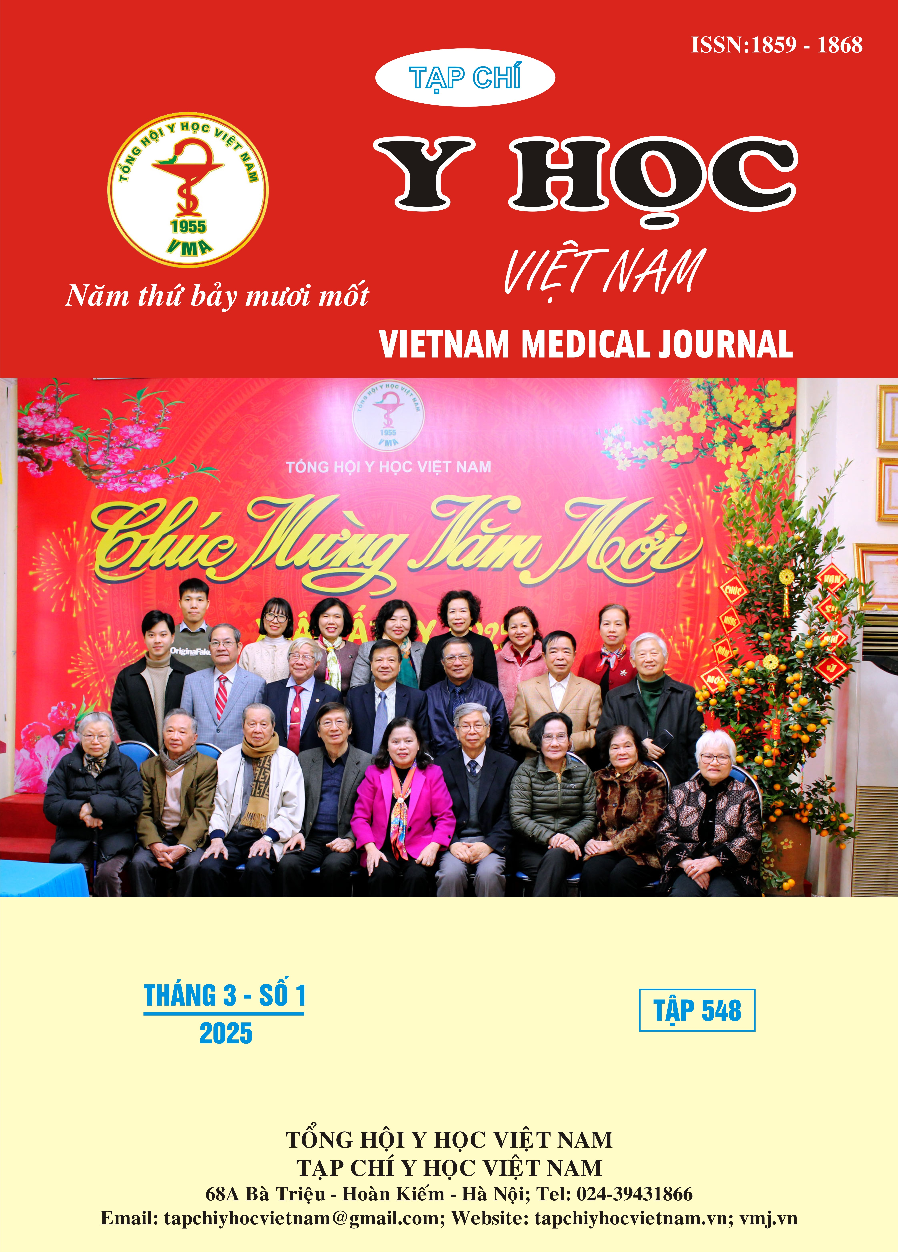INITIAL RESULTS OF ENDOVASCULAR EMBOLIZATION OF BRAIN ANEURYSM USING TEMPORARY ASSISSTED STENT
Main Article Content
Abstract
Among assisted techniques, balloon-assisted coiling is commonly used but has limitations such as flow interruption and thrombotic risk. The temporary Comaneci stent is an innovative advancement that stabilizes microcatheters, protects the aneurysm neck, and maintains blood flow. This study evaluates the initial outcomes of the Comaneci stent in endovascular coil embolization. Materials and Methods: A retrospective study was conducted at the Radiology Center, Hanoi Medical University Hospital (April 2022–August 2024), involving 13 patients with wide-neck intracranial aneurysms (dome-to-neck ratio <1.2 or neck width greater than the parent artery diameter), including both emergency and selective interventions. The Comaneci stent (Rapid Medical, Israel) was used in combination with coils. Results: 13 patients (mean age: 59.8 years) were successfully treated. Aneurysm locations were primarily in the posterior communicating artery (7/13). Complete aneurysm occlusion was achieved in 100% of cases (Raymond-Roy grades 1 and 2). Mean aneurysm size: 9.58 mm (largest: 22 mm, smallest: 3 mm); mean neck width: 3.94 mm. Two patients experienced minor complications (coil protrusion without affecting flow). No mortality or morbility occurred. Conclusion: The temporary Comaneci stent is a safe and effective adjunct in endovascular coil embolization, particularly for wide-neck aneurysms. This technique overcomes limitations of balloon assistance and permanent stents while eliminating the need for prolonged antiplatelet therapy. The study results highlight the potential for widespread clinical application.
Article Details
References
2. Taqi MA, Raz E, Vechera A, et al. Early Experience with Comaneci, a Newly FDA-Approved Controllable Assist Device for Wide-Necked Intracranial Aneurysm Coiling. Cerebrovasc Dis. 2021;50(4):464-471. doi:10. 1159/000514371
3. An update to the Raymond–Roy Occlusion Classification of intracranial aneurysms treated with coil embolization | Journal of NeuroInterventional Surgery. Accessed April 11, 2024. https://jnis.bmj.com/content/7/7/496
4. Irie K, Negoro M, Hayakawa M, et al. Stent Assisted Coil Embolization: the Treatment of Wide-necked, Dissecting, and Fusiform Aneurysms. Interv Neuroradiol. 2003;9(3):255-261.
5. Wallace AN, Samaniego E, Kayan Y, et al. Balloon-assisted coiling of cerebral aneurysms with the dual-lumen Scepter XC balloon catheter: Experience at two high-volume centers. Interv Neuroradiol. 2019;25(4) :414-418. doi:10.1177/ 1591019919828677
6. Layton KF, Cloft HJ, Gray LA, et al. Balloon-Assisted Coiling of Intracranial Aneurysms: Evaluation of Local Thrombus Formation and Symptomatic Thromboembolic Complications. American Journal of Neuroradiology. 2007;28(6): 1172-1175. doi:10.3174/ajnr.A0490
7. Ghorbani M, Hejazian E, Bahrami E, et al. Flow diverter-coil technique for endovascular treatment of complex wide neck brain aneurysms, Technical point. Caspian J Intern Med. 2021;12(3):350-355. doi:10.22088/cjim.12.3.350
8. Feng W, Tian X, Kang J, et al. Flow Diverter Device-Assisted Coiling Treatment for Cerebral Blister Aneurysm: A Single-Center Study. Brain Sciences. 2023;13(3):435. doi:10.3390/brainsci 13030435
9. Cho YD, Rhim JK, Kang HS, et al. Use of Triple Microcatheters for Endovascular Treatment of Wide-Necked Intracranial Aneurysms: A Single Center Experience. Korean Journal of Radiology. 2015;16(5): 1109-1118. doi:10.3348/kjr.2015. 16.5.1109
10. Sirakov A, Minkin K, Penkov M, et al. Comaneci-Assisted Coiling as a Treatment Option for Acutely Ruptured Wide Neck Cerebral Aneurysm: Case Series of 118 Patients. Neurosurgery. 2020;87(6):1148-1156. doi:10. 1093/neuros/nyaa200


